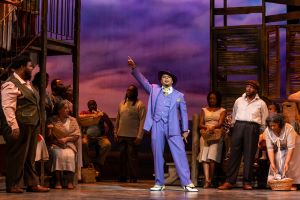Over the past few years, Kenan Recital Hall at Peace College has become one of area’s prime chamber music venues. Kenan now serves as a home for NC Symphony chamber ensembles and for much unusual and unjustly neglected music. Peace College is also building a fine department for music performance, assembling an impressive faculty, one of whom is Milton Rubén Laufer. Of Central American and European roots himself, Laufer specializes in the interpretation of Hispanic music from both hemispheres. A few years ago Laufer spent a year in Spain as a Fulbright scholar, studying the works of Isaac Albéniz and working on a book on the performance of Hispanic music. Friday’s concert – most of which he will repeat in a concert in his native Chicago – represented the fruits of his labor in a delightful program of Hispanic and pseudo-Hispanic music.
Laufer is a powerful pianist who tends to play loud and fast – but not loose – and the program suited his style. He opened with two works by Manuel de Falla, the “Dance of Terror” from El Amor Brujo and “Spanish Dance No. 1” from La vida breve. It was a rousing and authentic warm up for the next work, Franz Liszt’s Rhapsodie espagnole.
More Lisztian than Spanish, the Rhapsodie consists of two sets of intertwined variations of two well-known Iberian melodies, “La folia ” and “Jota aragonesa.” (Both melodies have served as fodder for uncountable sets of variations and fantasies.) Liszt imbued the Rhapsodie with every audience-wowing trick of pianistic virtuosity in his substantial armory. Most ingenious are the ways in which the variations of the two melodies weave around each other, taking the standard variation form into new – and not often imitated – territory. Laufer performed it at breakneck speed with amazing accuracy and panache.
While not technically Spanish, Maurice Ravel’s Basque roots and birthplace, just north of the Spanish border in France, certainly informed his many Iberian works. “Alborada del Gracioso” is replete with Spanish folkloric harmonies and rhythms. It is a three-part work, the first section a light toccata in the piano’s upper register. The second and longest section begins as a recitative prelude to the serenade proper in a more somber vein. The final part, involving sweeping glissandi, recaptures the spirit of the opening but employs the entire keyboard as it fragments and transforms the themes. The gracioso is the proverbial “tricky servant” in Spanish literary and theatrical tradition. Laufer’s performance was angular and rhythmic but lacked some of the playfulness and humor of the work that conjures Sancho Panza beneath the balcony of a secluded beauty, rather than a romantic hero.
The most interesting work of the concert, the crown of Laufer’s musicological research, was the world premiere performance of an early (1893) version of Isaac Albéniz’s “La Vega” (“The Meadow”). Five years later Albéniz reworked the piece, in particular its ending, as Part I of his never completed Alhambra Suite. While in Spain as a Fulbright scholar, Laufer unearthed and edited the original manuscript, soon to be published in Germany.
Laufer dedicated this concert to the memory of Anne Weatherspoon Phoenix, arts patron and Peace College alumna and trustee, who endowed the chair Laufer currently holds. In remarks from the stage, Laufer emotionally recalled his personal relationship with Anne Phoenix. He concluded the program with Claude Debussy’s L’Isle Joyeuse, which he had performed on his first concert at Peace five years ago when Mrs. Phoenix commented how much she enjoyed his playing. Though not Hispanic, “L’Isle Joyeuse” was in keeping with the virtuosity of the program. There were certainly more than the usual number of notes, and Laufer showed the technical and interpretive mastery to bring it off.
As encore, Laufer played the rumba “Cachita” by Puerto-Rico’s Rafael Hernandez (1892-1965), one of the island’s most popular composers of dance music.











